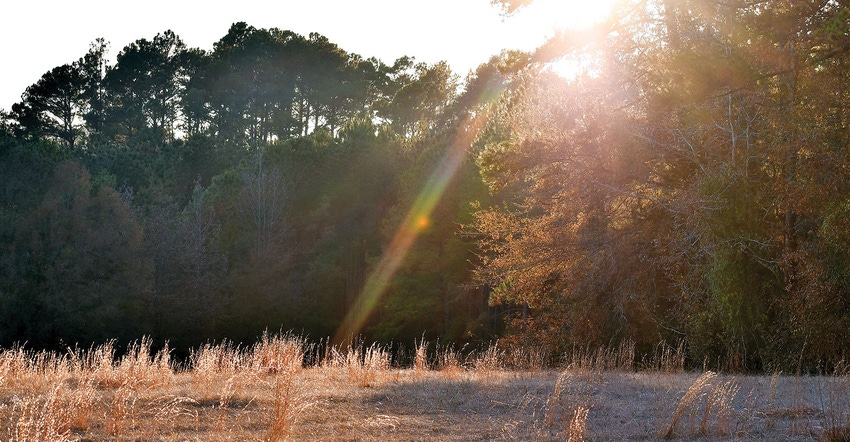
One in five Americans will develop skin cancer during their lifetime, and regular exposure to ultraviolet (UV) radiation without sun protection increases chances of developing skin cancer.
Dr. Anna Woodson, a dermatologist from the Dermatology Clinic, Columbus, Miss., reminded her audience at the Mississippi Agricultural Consultants Association (MACA) 47th Annual Conference at Mississippi State University about protecting their skin and visiting their dermatologist regularly.
Woodson discussed three common skin cancers — basal cell carcinoma, squamous cell carcinoma, and melanoma.
Basal cell carcinoma
Basal cell carcinoma is most commonly found in Caucasians, and it is the most common skin cancer diagnosed in the U.S. Tanning beds have greatly increased incidents of this cancer.
"It's a slow-growing skin cancer that rarely spreads," Woodson said. "They are more of a cosmetic problem; pigmented basal cells can be brown to black and are sometimes confused with melanomas.
"Superficial basal cells look like a little patch of eczema or a common rash we treat. It can bleed more easily and can be sore. You can get a recurrent basal cell."
Physical traits for those at risk, not only for basal cell but any skin cancer, include the inability to tan; blonde or red hair; blue, green or gray eyes; freckles; and a fair complexion. Anyone can get skin cancer, regardless of these genetic factors, and spending a lot of time outdoors increases risks.
"A history of previous skin cancer increases your risk of having a second skin cancer by about 40%, especially after the first two to five years after your first cancer," she said. "Also, if you have a close blood relative who has had skin cancer, that can increase your risks."
Squamous cell carcinoma
Squamous cell carcinoma is the second most common skin cancer in Caucasians, and it is caused by cumulative damage from years and sun exposure.
"It's a little more aggressive than basal cell, and it has about a 1% to 2% chance of spreading to other parts of the body. 700,000 cases are diagnosed yearly in the U.S. It is most frequently diagnosed in areas of chronic sun exposure like the head, hands, or arms," Woodson said.
Squamous cell has the potential to spread, but it's highly curable when caught early.
"Signs and symptoms include, it looks like a little patch of eczema or a rash that won't go away," she said. "It gets worse and becomes symptomatic such as bleeding or being sore."
Factors that increase the chance of squamous cell carcinoma include a lot of UV exposure, indoor tanning, tobacco products, pesticides, arsenic in well water, and tar.
Melanoma
Melanoma is more serious because it can spread easily. Invasive melanoma was projected to be the fifth most common cancer for both men and women in the year 2019, according to the latest figures.
"Melanoma rates have doubled between the years 1980 to 2011 and continue to be on the rise," Woodson said. "Caucasians and men older than 50 have an increased risk of developing melanoma compared to the general population. Melanoma is also the second most common form of cancer in females between the ages of 15 to 29."
For warning signs, look for odd spots that stick out from other blemishes. They are probably darker and bigger. The edges can be jagged and scalloped or not well-defined. There may be multiple colors within the spot.
"Here are the A, B, C, D, and E of looking at your moles for signs of melanoma," Woodson said. "A is for asymmetric; one side does not look like the other. B is for border; it may have a scalloped edge versus a nice smooth edge. C is color; there are multiple colors throughout rather than one color. D is for diameter; it's bigger than a pencil eraser. E is evolving, so any moles that are changing or concerning."
Some melanoma symptoms include itching, bleeding, and pain, but the vast majority, about 80%, are asymptomatic.
Preventing skin cancer
"Unless you have a history of skin cancer or an area of particular concern, I would say to visit your dermatologist once a year for a checkup," Woodson said. "Early detection is the key to catching skin cancer before it gets out of hand and to start the appropriate treatment.
"It's hard to project into the future and think you could potentially get skin cancer if you don't take preventative measures."
To prevent skin cancer, everyone can take on a few basic steps daily.
"Number one, seek the shade whenever possible," she said. "Also, cover up by wearing protective clothing and a wide-brimmed hat. Wear sunscreen even in winter or when it's cloudy; I recommend physical sunblock or mineral sunblock, which has zinc oxide and titanium dioxide."
Choose a sunscreen of 30 to 50 broad-spectrum and water-resistant to prevent the sunscreen from sweating off. While these are some guidelines to consider when choosing a sunscreen, the best sunscreen is the one you will use consistently.
"Also, always be aware of your skin and any new changes like moles or changing spots, and if you notice anything suspicious, a great resource is spotskincancer.org," Woodson said. "Of course, see your dermatologist to get a diagnosis for spots of concern."
About the Author(s)
You May Also Like




